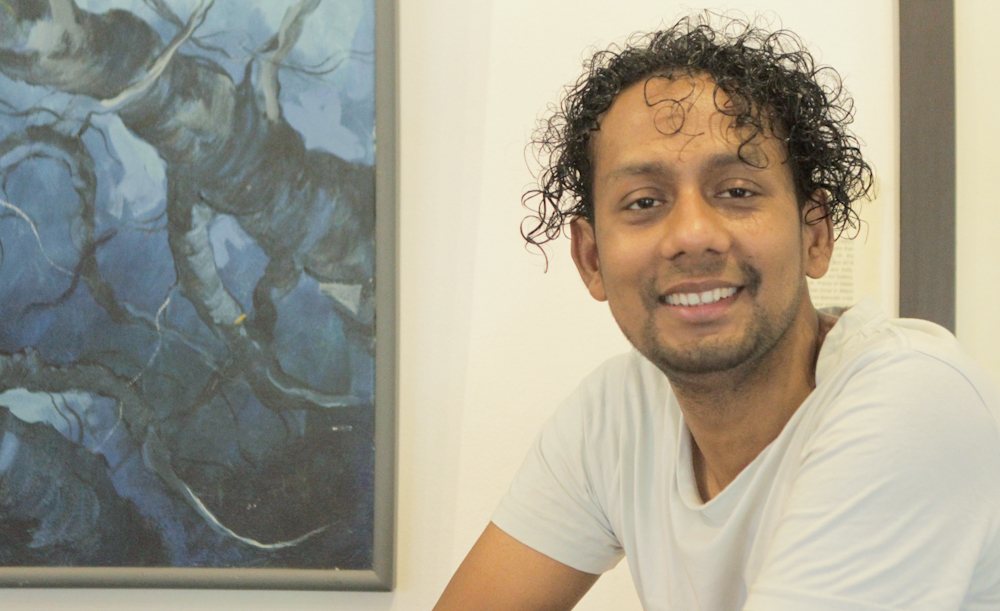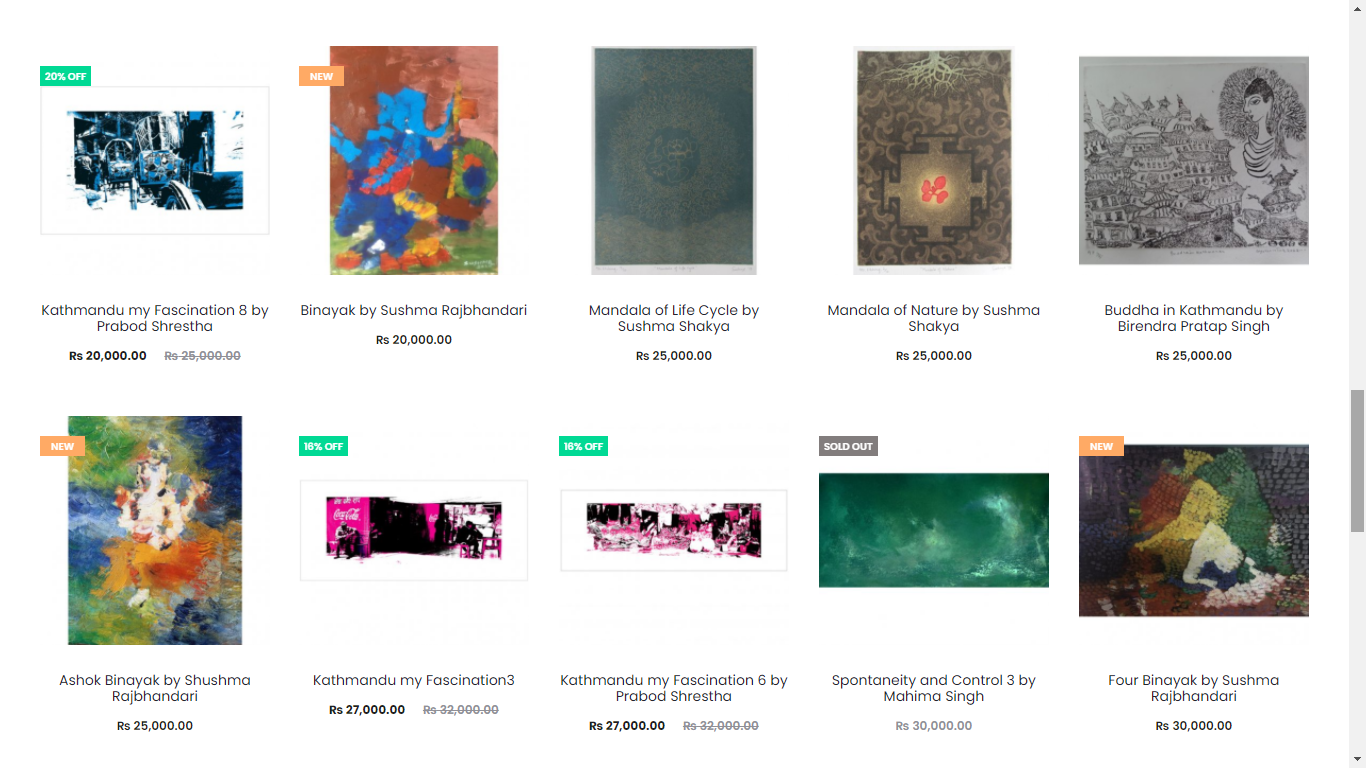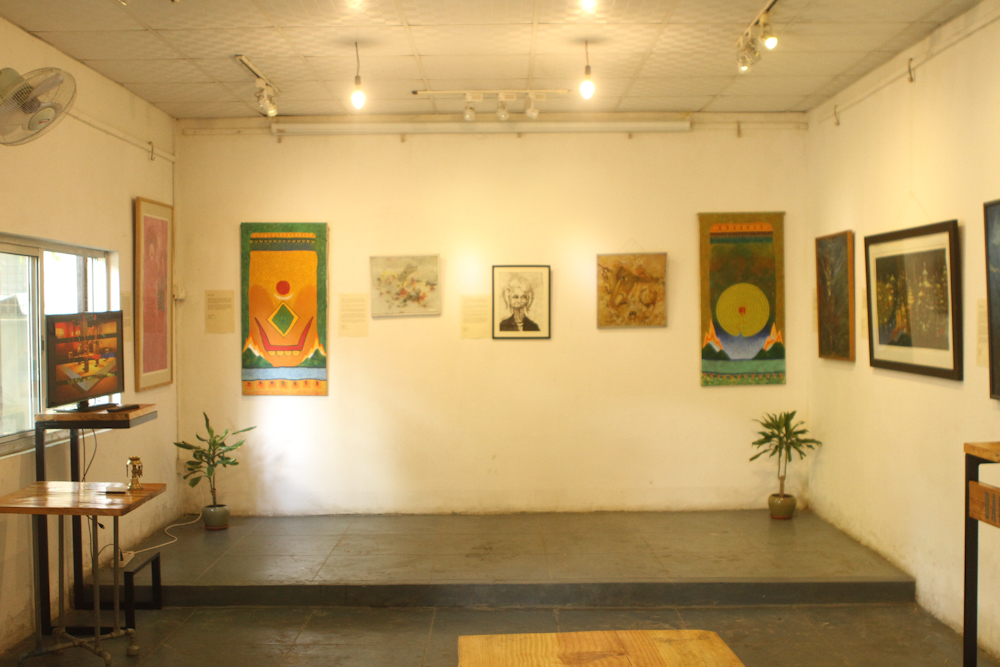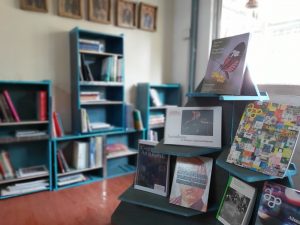
The recent Covid-19 lockdown forced people to maintain distance, and put their normal life on hold. The Nepali art sector has also not remained untouched and has sustained major setbacks in the face of this pandemic. Keeping the art and artists active has remained a challenge. However, there have been a few attempts to keep the sector alive.
Bikalpa Art Centre (BAC) claims its new product ‘A Portal to Nepali Contemporary Art after Covid-19’ is also one of those efforts. According to co-founder and director, Saroj Mahato, the portal has been launched to promote the Nepali art sector despite the challenges of restricted physical contact. Mahato, who believes that the Nepali art has not received as much limelight as it should have received over the years, claims his new project will be significant in the development of the sector.
Recently, Onlinekhabar has talked to Mahato about his new project, his vision, and the future of the Nepali art, overall. Excerpts:
What is your new project? What is the idea behind it?
The website, now already online, aims to act as an e-commerce website and as an archive. We aim to create and promote an art market within the Nepali art sector, and simultaneously, keep proper records and details of the art pieces. We even create and maintain portfolios of the artists. Through the project, we have brought over 40 artists, with their own unique style. So anyone interested to buy an artwork can view it, get the necessary information about it, and proceed to purchase it.
The idea actually first started in 2013, but back then, it was not feasible; we felt the market was not ready. Now, it felt more comfortable to start the idea, both technically and ideationally. As we are struggling with the Covid-19 crisis, it has created a situation where there is less mobility, and more need for going online, even art. The government has also provided some flexibility and brought some changes that promote the idea. I believe we have that opportunity, where we can or should think about how we can deliver art to the doorsteps of people. So, we reviewed the idea now as we felt there are not many platforms where people can buy art.
It is basically to uplift the Nepali art space as a whole. Through our project, we will connect artists to people, for which, we will have two artists of a month with three activities to increase interactivity and networking with the artist.
 So, it seems this is just an individual business. But, can an individual effort uplift the Nepali art sector?
So, it seems this is just an individual business. But, can an individual effort uplift the Nepali art sector?
Where there is nothing, one step or one person can leave an imprint, and that they can become a milestone. However, it does not mean that it will be a sole catalyst for the overall upliftment of the art sector. There will be many limitations, be it one’s energy, the resources, or the motivation they had at the start. So, individually, it might not be possible. But, the sector can thrive if many individuals work together.
For that to work out, we need the right schooling first; there needs to be a good foundation. Right now, we lack the proper schooling about what art is. We require the right kind of dialogue, but there is a weak connection between artists and society now. The art sector also lacks media attention as well as the government’s prioritisation.
So, if we create an environment for a high level of engagement from the audience and develop the culture of going to art galleries, museums, among them, we can connect the artists, audience, art lovers, art enthusiasts to art. If only we had well-read, well-informed, knowledgeable people in the government who are aware of the importance of art and ready to promote and increase the exposure. Maybe, then we can uplift the art sector.
I say this because, if the art is institutionalised, the work we have done, and our achievements can be continued and cherished even if the person is no longer present. If not, the project will be limited as a hobby.
As you mentioned, the project is about creating and promoting the Nepali art market. So, what is your assessment of the Nepali art market now?
We are stuck somewhere; the progress graph has been very static. In my 20 years of observation and involvement in the sector, the Nepali art market scenario, then and now, has been very similar. That does not mean that the art sector has not made any progress; they are two different things.
Today, we have more institutions teaching art; back then, there was only one. We have enough art students, practising their skillsets; there are mentors, and we have great exposure and access to information and knowledge of the art sector, worldwide. However, for the art market to thrive, there have not been sufficient right factors that push it forward, promote it, and increase the art value proposition. The value of Nepali artists, or more appropriately their piece of work, is more or less the same as it was 20 years ago.
Art is incomplete without dialogues about it, where individuals, media personnel, art experts, and artists actively engage in the conversation. We lack art writers or critics who set the right narratives that affect the view of the public. We could have produced and promoted art scholars and writers with the number of art institutions we have today. But, the ones we have are the same people who were writing about art 10 or 20 years back. So, there is no contribution of new ideas.
And, more importantly, we lack the necessary curatorial practices that put the art and artists in the front line. I see a huge gap there.
You say that the art value proposition has not changed. But why is the progression necessary, and where do we need to work?
If you see in an international scenario, purchasing an art piece from a particular artist is a huge deal. Not just the price is high, but they are highly valued too. But, Nepali artists, even if they are on par when it comes to quality, do not get that regard here. It is because we fail to determine the art value proposition.
To define the art value proposition, we have to monitor the art market closely. We have to curate the relationship with the international art market, subsequently, promote Nepali art, Nepali artists, and events. And, we have to set the narrative about every artwork, their stories. Along with that, we have to encourage people to engage and invest in the artworks.
And again, it starts from the foundation, and the market has to be ready. For that, we have to raise awareness in and among the art community as well as the audience. We have to keep and maintain the archive, the database of all the artists and their artworks. It is also crucial that we promote the art gallery and museum-going culture, that we encourage art and events actively and create a buzz around it.
The most crucial aspect is how we educate and encourage the investors, the art buyers, the art lovers, and the corporate houses, to invest in art. The Nepali art market needs people ready to invest and buy art pieces, willingly, consciously as well as regularly. Purchasing art one time in life, as a hobby, will not change our current scenario. Now is the time that we should think and focus on profit-making prospects that will interest the investors and the buyers.

For the promotion of the Nepali art market, what are the roles of the private and public sectors?
Individuals or private companies have so far made some of the significant contributions and investments in Nepali art. The likes of Kathmandu Triennale and Photo Kathmandu were private affairs. On the other hand, I think people get less exposure and access to the museums and art institutions owned by the government even though they invite international artists.
But, we will have to think bigger now, both sides should work together. Starting from the roots, we have to establish more art museums and include elements that represent the art and culture of Nepal. We have to increase awareness about art and encourage museum-going and art-purchasing culture among people since early. Our government needs to make changes in policies that prioritise art and culture, also actively participate in promoting them across the country and worldwide.
After all, one can determine how progressive a country is by the investment the people and the government make in the art. How long will we keep introducing our country as the land of Buddha and Mount Everest? We have to start thinking of how we can redefine that identity through arts.
Do youth think the Nepali art sector has a competitive advantage in it?
Our existence itself is the competitive advantage we need to excel in the art scenario. We have all the right elements: rich history, diverse culture, unique lifestyle, identity, festivals, and many more. If we can modernise that, and we represent and package that well, suitable also for the international market, we will see progress there.
Also, art is not just about paintings or sculptures; it can be any form of expression. And, I believe Nepal is on par with when it comes to keeping up with international trends, and when it comes to experimentation and integration of the new media forms in art. People are enthusiastic, knowledgeable, and they have that access and exposure today. So, I believe, we have that edge.






















